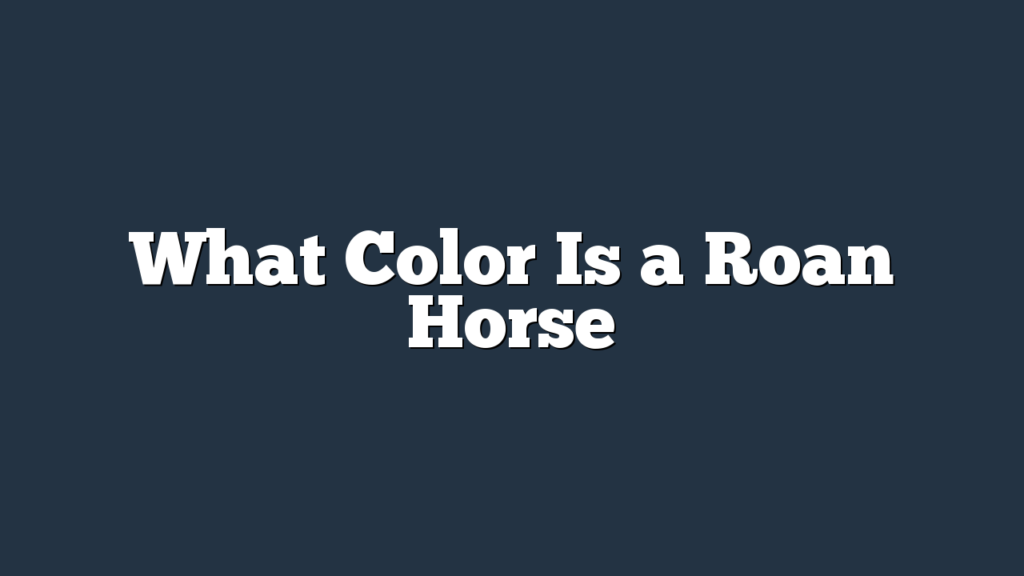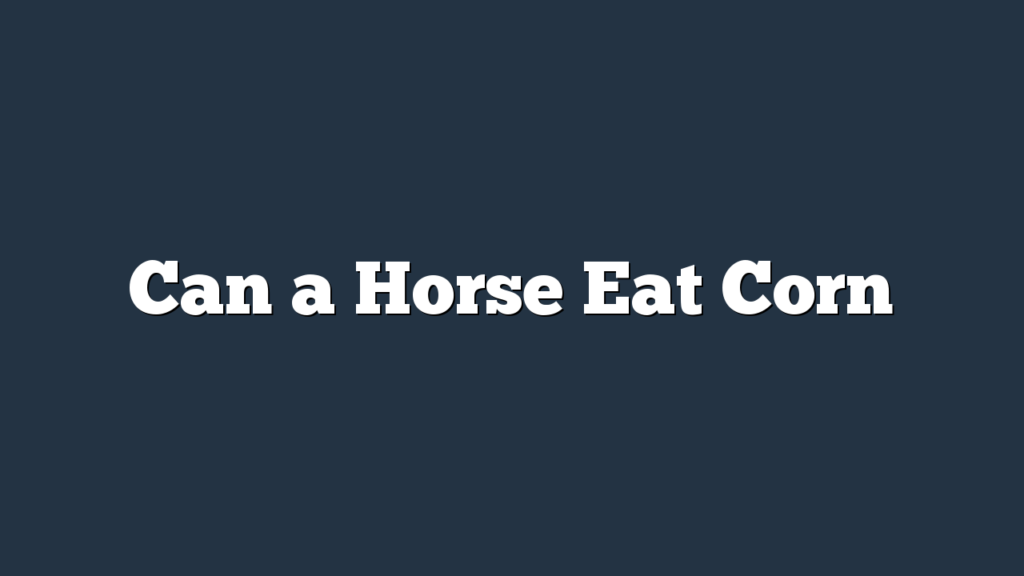Do you ever wonder what color a roan horse is? Well, you’re about to find out!
In this article, we will explore the fascinating world of roan horse genetics and how to differentiate them from other colors. We’ll discuss the various coat patterns of roan horses and the factors that influence their colors.
Get ready to debunk common misconceptions and learn about popular roan horse breeds. Plus, we’ll share tips on how to care for and maintain their beautiful coats.
Let’s dive in!
Roan Horse Genetics
Understanding Roan horse genetics is crucial for anyone interested in the coloration of these horses. When it comes to roan horse breeding, it’s important to have a basic understanding of how their genetics work. Roan is a coat color pattern that’s inherited through a simple dominant gene. This means that if a horse carries the roan gene, it will express the roan coat color pattern. Breeding two roan horses together can produce offspring that are either roan or non-roan, depending on their genetic makeup.
It is also important to consider roan horse health when breeding these horses. While roan horses are generally healthy, there are some health concerns that are more commonly seen in roan horses compared to other coat colors. One such concern is the increased risk of developing sunburn and skin cancer. The white hairs in the roan coat don’t have the same protective pigment as the colored hairs, making the skin more susceptible to damage from the sun’s ultraviolet rays. It’s crucial for roan horse owners to take extra precautions to protect their horses from prolonged exposure to the sun.
Differentiating Roan From Other Colors
To distinguish a roan horse from other colors, you can look for the presence of white hairs scattered throughout the coat. These white hairs give the horse a unique appearance and help differentiate it from other coat colors. Roan horses have a base color with white hairs mixed in, which creates a speckled or mottled effect. This is different from other coat colors, such as chestnut or bay, where the coat is a solid color without any white hairs.
The presence of white hairs is the key characteristic of a roan horse. It’s important to note that the amount of white hairs can vary from horse to horse. Some roans may have a few scattered white hairs, while others may have a more pronounced roan pattern with a higher concentration of white hairs.
Roan horse symbolism varies across different cultures and societies. In some cultures, roan horses are associated with wisdom, strength, and courage. They’re seen as noble and powerful creatures. In others, they’re considered to bring good luck or represent a connection to nature.
There have been many famous roan horses throughout history. One notable example is Paul Revere’s horse, Brown Beauty, who was a roan. Another famous roan horse is Trigger, the faithful companion of Roy Rogers. These horses not only had unique coat colors but also made a significant impact in their respective fields.
Variations of Roan Coat Patterns
Now let’s talk about the variations of roan coat patterns.
Roan horses can exhibit different patterns, such as strawberry roan, blue roan, and red roan, each with its own unique blend of colors.
These patterns are determined by the inheritance of the roan gene, which can result in a wide range of coat colors and patterns.
Different Roan Coat Patterns
You can easily identify different variations of roan coat patterns in horses. These variations are determined by roan horse genetics and can be observed in the distribution and intensity of the roan hairs on the horse’s body.
One common variation is the classic roan pattern, where the roan hairs are evenly distributed throughout the horse’s coat, giving it a speckled appearance.
Another variation is the strawberry roan pattern, characterized by a mix of white and red hairs, which can create a beautiful and unique color combination.
Additionally, there’s the blue roan pattern, where the roan hairs are mixed with black hairs, creating a striking contrast.
These different variations of roan coat patterns showcase the diversity and beauty of these horses.
Inheritance of Roan Gene
Understanding the inheritance of the roan gene can help you comprehend the variations of roan coat patterns in horses. Here are four key points to consider:
- Inheritance: The roan gene is dominant, meaning if a horse inherits one copy of the gene from either parent, it will exhibit the roan coat pattern. Breeding two roan horses together can result in a higher chance of producing roan offspring.
- Variations: Roan coat patterns can vary in intensity, with some horses having a few white hairs mixed with their base coat color, while others have a more evenly distributed mixture of white and colored hairs.
- Breeding Considerations: When breeding roan horses, it’s important to consider the genetic makeup of the horses involved. Understanding the inheritance patterns can help breeders make informed decisions to produce desired coat patterns.
- Health Implications: While roan coat patterns are purely cosmetic, it’s worth noting that some roan horses, particularly those with a higher density of white hairs, may be more susceptible to sunburn or skin issues. Proper care and management should be provided to ensure their well-being.
Factors Influencing Roan Horse Colors
Now let’s explore the factors that influence the colors of roan horses. Understanding the genetics behind roan coat patterns is crucial in comprehending how these colors are inherited.
Additionally, environmental factors can also play a role in the final coloration of a roan horse. By examining both genetic and environmental influences, we can gain a comprehensive understanding of what determines the color of a roan horse.
Genetics of Roan Horses
To understand the genetics of roan horses and the factors that influence their colors, it’s important to delve into the intricate workings of their genetic makeup. Here are four key factors that play a role in determining the color of a roan horse:
- Roan Horse Breeding: Breeding two roan horses together increases the likelihood of producing a roan offspring. However, it isn’t a guarantee, as the inheritance of the roan gene follows a complex pattern.
- Genetic Testing for Roan Gene: Genetic testing can be done to determine if a horse carries the roan gene. This can be particularly useful when planning breeding programs to ensure the desired color outcome.
- Roan Modifier Genes: Other genes in a horse’s genetic makeup can influence the expression of the roan gene, leading to variations in the intensity and distribution of the roan color.
- Roan Colors in Different Breeds: Roan horses can come in a range of colors, including red, bay, and blue. The specific breed of the horse can affect the variations of roan colors that are possible.
Understanding the genetics behind roan horses can contribute to more informed breeding decisions and a better understanding of the colors and patterns seen in these beautiful animals.
Coat Patterns and Inheritance
As you delve into the topic of coat patterns and inheritance, you’ll discover the various factors that influence the colors of roan horses.
One of the key factors is roan horse genetics. The inheritance of the roan gene plays a significant role in determining the coat color of a roan horse. The roan gene is dominant, which means that if a horse inherits a copy of the gene from either parent, it will display the roan pattern.
However, the intensity of the roan pattern can vary depending on other genes and modifiers present in the horse’s genetic makeup. These modifiers can affect the distribution and expression of the roan pattern, resulting in different variations of roan coat colors, such as blue roan, red roan, and strawberry roan.
Understanding the intricacies of roan horse genetics is essential in comprehending the wide range of coat colors seen in these magnificent creatures.
Environmental Factors Affecting Color
You can influence the color of a roan horse by considering the environmental factors that play a role in determining its coat color. Here are four important factors to consider:
- Sunlight exposure: The amount of sunlight a horse receives can affect the intensity of its roan color. Sunlight can lighten the hair, resulting in a more faded appearance.
- Diet: Nutrition plays a crucial role in maintaining the health and vibrancy of a roan horse’s coat. A balanced diet, rich in essential vitamins and minerals, can enhance the color and overall appearance of the horse.
- Climate: The climate in which a horse lives can impact its coat color. Extreme weather conditions, such as excessive heat or cold, can cause the coat to change and potentially fade.
- Stress levels: High levels of stress can affect a horse’s coat color. Stress can lead to hair loss or dullness, resulting in a less vibrant roan color.
Common Misconceptions About Roan Horses
Many people mistakenly believe that all roan horses have a mixture of white and another color in their coat. However, this is just one of the common misconceptions about roan horses. Let’s debunk some of these roan horse myths and set the record straight.
| Misconception | Debunking |
|---|---|
| Roan horses are always white and another color | Roan horses have a unique coat pattern characterized by a mixture of white and colored hairs. The base color of the horse remains the same, but the roan gene causes the hairs to intermingle, creating a roan appearance. |
| Roan horses change color with age | Roan horses do not change color as they age. The roan pattern is present at birth and remains consistent throughout their life. The only change that can occur is a slight darkening of the coat due to sun exposure. |
| Roan horses are always calm and gentle | While temperament can vary among individual horses, there is no direct correlation between the roan coat color and temperament. Roan horses can exhibit a wide range of temperaments, just like horses of any other color. |
It is important to dispel these misconceptions about roan horses to enhance our understanding and appreciation for these unique and beautiful creatures. Remember, roan horses come in various colors and have their own distinct characteristics, just like any other horse.
Roan Horse Breeds and Popularity
Roan horse breeds have gained popularity among equestrians worldwide. These unique horses are known for their distinctive coats, which feature a mixture of white hairs and colored hairs. If you’re considering owning a roan horse, it’s important to understand the different breeds and their characteristics.
Here are four things you should know about roan horse breeds:
- Breeding practices: Roan coat color is controlled by a single gene, and it can be passed down from generation to generation. Breeders carefully select horses with roan genetics to produce offspring with the desired coat color. Understanding the breeding practices of roan horses can help you choose the right breed for your needs.
- Popularity among equestrians: Roan horses have become increasingly popular among equestrians due to their striking appearance and gentle temperament. They’re often sought after for pleasure riding, trail riding, and even competitive events.
- Coat care tips: Taking care of a roan horse’s coat requires regular grooming to maintain its unique color. Using specialized shampoos and conditioners designed for roan horses can help enhance and preserve the coat’s vibrancy. Additionally, providing proper nutrition and ensuring your horse is protected from sunburn can also contribute to a healthy and beautiful roan coat.
- Different roan horse breeds: Roan coats can be found in various horse breeds, including the Appaloosa, Quarter Horse, and Tennessee Walking Horse. Each breed has its own unique characteristics and strengths, so it’s important to research and choose a breed that aligns with your riding goals and preferences.
Caring for and Maintaining Roan Coats
Maintaining the vibrant and unique color of a roan horse’s coat requires regular grooming and specialized care. Roan horse grooming is essential to keep their coats healthy and looking their best. Start by regularly brushing your roan horse’s coat to remove dirt, debris, and loose hair. Use a soft-bristled brush to avoid damaging the hair follicles. Be sure to pay attention to the areas where the coat transitions from one color to another, as these areas can be more prone to tangling and matting.
In addition to regular grooming, it’s important to provide your roan horse with a balanced diet. Proper nutrition plays a crucial role in maintaining coat health. Ensure your horse is receiving the necessary vitamins and minerals to support a healthy coat. Consult with a veterinarian or equine nutritionist to determine the best diet for your roan horse’s specific needs.
Protecting your roan horse’s coat from the elements is also important. Provide shelter during extreme weather conditions, such as rain, snow, or intense sunlight. Use fly sprays or fly masks to prevent irritation from insects and minimize rubbing. Additionally, consider using a coat conditioner or sunscreen to protect the coat from sun damage.
Frequently Asked Questions
What Is the History and Origin of the Roan Horse Breed?
The history and origins of the roan horse breed are fascinating. Did you know that roans have been around for centuries? Their unique coloration and genetic makeup make them truly special.
Are There Any Health Concerns or Genetic Issues Specific to Roan Horses?
You may be wondering about the health concerns and genetic issues specific to roan horses. It’s important to note that roan horses don’t have any known health concerns or genetic issues specific to their coloration.
Can Roan Horses Change Color Over Time?
Roan horses can change coat color over time due to genetic factors. It’s important to note that without the context of “What Color Is a Roan Horse,” this answer focuses on the changing coat color and genetic factors.
Are There Any Specific Grooming or Maintenance Tips for Keeping a Roan Horse’s Coat Healthy and Vibrant?
To keep your roan horse’s coat healthy and vibrant, follow these grooming techniques: regular brushing to remove dirt and debris, bathing as needed, and using moisturizing products. Additionally, ensure a balanced diet to meet its dietary requirements.
Can Roan Horses Be Registered or Shown in Specific Breed Associations or Competitions?
Roan horses can be registered and shown in specific breed associations or competitions. To find out the specific requirements and eligibility criteria, you should contact the respective associations or competitions.
Conclusion
So, now you know that roan horses can come in a variety of colors, including red, blue, and bay. Their unique coat patterns make them stand out among other horse breeds, and they require special care to maintain their beautiful coats.
Despite common misconceptions, roan horses are popular among equestrians and can be found in various breeds.
So, whether you’re a horse enthusiast or just curious, now you have a better understanding of the captivating colors of roan horses.



